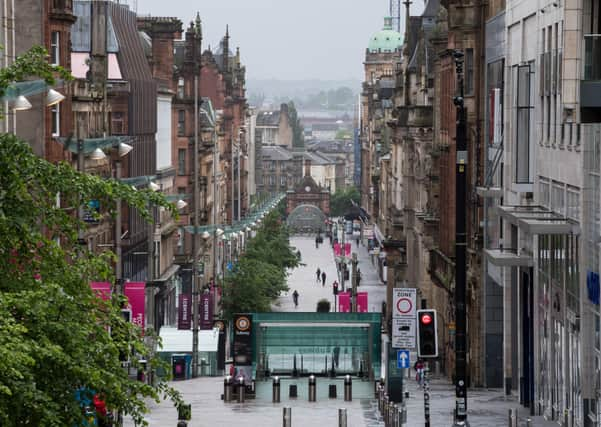Battle for survival of Scotland’s retailers is ‘far from over’


Several retailers have already collapsed during the lockdown, with Denbenhams, Monsoon, Quiz, the UK arm of Victoria’s Secret, the Oasis and Warehouse group, and Cath Kidston among the high street names to have gone into administration since March at a cost of thousands of jobs.
Figures for May show a total sales slump of almost 28 per cent compared with May 2019, the second lowest figure since this form of monitoring began in 1999.
Advertisement
Hide AdAdvertisement
Hide AdTotal non-food sales fell by more than 50 per cent, although this is partially offset by the estimated effect of online shopping.
The SRA’s head of policy and external affairs, Ewan MacDonald Russell, said: “Retail sales slumped by a quarter in May as the continued impact of the Covid-19 crisis ratcheted up the pressure on high streets. While the figures were an improvement on April’s record low, restrictions on trading are bringing many retailers to the brink.
“Food sales finally returned to growth, although the 3.6 per cent rise is unimpressive considering the continued closure of restaurants, pubs, catering and most food to go outlets.
“Grocery retailers report basket spend is higher than pre-crisis with consumers balancing a larger regular shop with top-ups from local convenience format stores. Retailers still have to manage very significant cost increases from enforcing physical distancing, colleague and customer protection, and increased online deliveries.
Advertisement
Hide AdAdvertisement
Hide Ad“Non-food sales remain very weak, with online sales increasingly important. Games and electricals continue to perform well, and we saw a rise in kitchen appliances as households turn to cooking and home-baking in the absence of eating out.
“Fashion and footwear sales continue to struggle as school children and office workers don’t need to worry about workwear. Large items also performed poorly, at least in part as consumer confidence remains very weak due to uncertainty about employment and the economy.
“The current crisis is forcing retailers who are currently barred from opening to accelerate the move to online and multi-channel sales.
“When combined with weak consumer demand and confidence there is a real risk of entering a vicious economic cycle where reduced retail, hospitality, leisure, and other sales leads to more pressure on businesses through the supply chain which leads to fewer workers.
Advertisement
Hide AdAdvertisement
Hide AdIncreased unemployment will exacerbate this further. It’s therefore essential we have a clear and unambiguous indicative timetable for high streets re-opening, a clear plan so shoppers can travel to and shop safely in town and city centres, and a short term economic stimulus package to encourage consumers to start shopping again.”
Paul Martin of KPMG, added: “The latest data provides another worrying set of results for Scotland’s retailers, with like-for-like sales down more than 19 per cent, but there is a glimmer of hope for the industry when you compare it with April’s record low of 32.2 per cent.
“The food sector is understandably holding its own, but the focus now shifts to the hundreds of independent and chain non-food retailers preparing to open their doors as restrictions ease.
“In recent years we were already reporting on shifting consumer habits. The Covid-19 pandemic has accelerated that transformation. For Scotland’s retailers, the battle for survival is far from over.
Advertisement
Hide AdAdvertisement
Hide Ad“With the safety of employees and customers at the forefront, retailers will need to gradually rebuild footfall and takings with innovative public health measures and a margin enhancing sales strategy. June could become a crucial month as the sector, and consumers, come to terms with a very different looking High Street.”